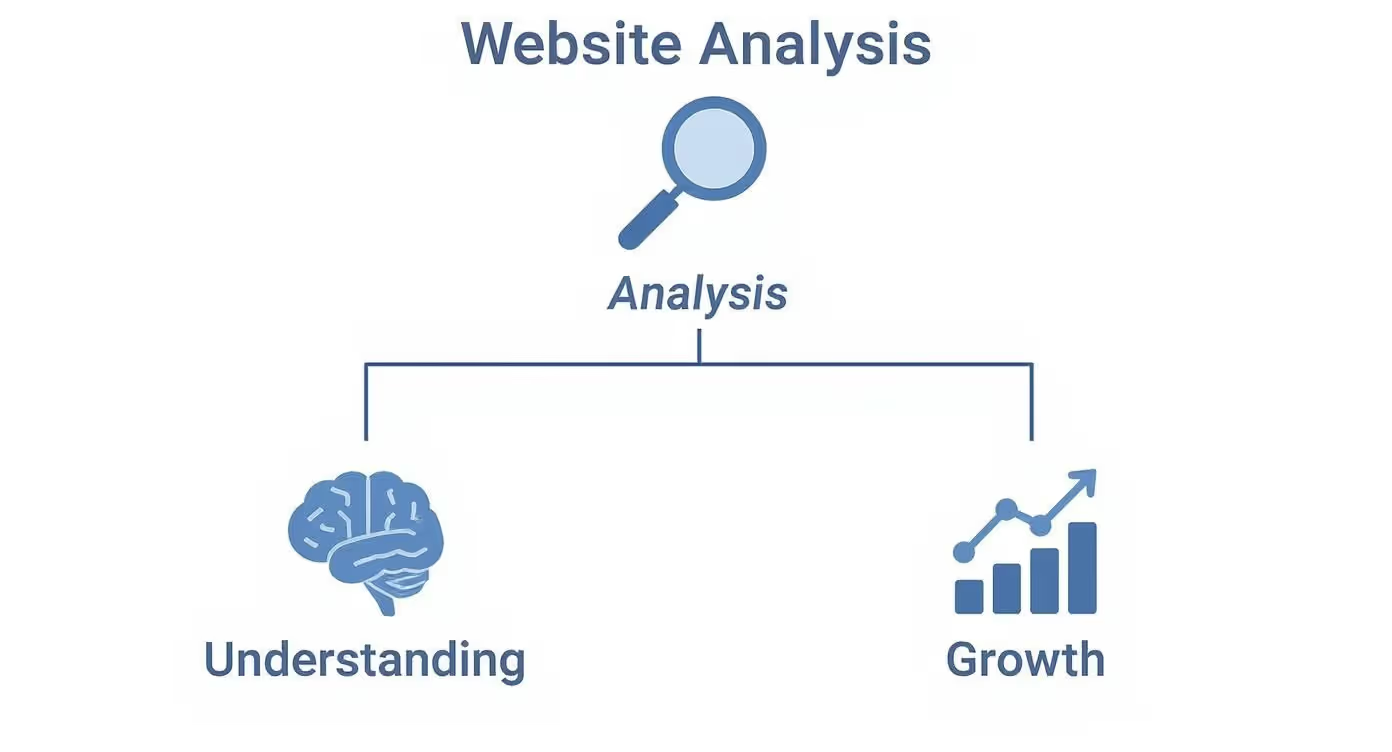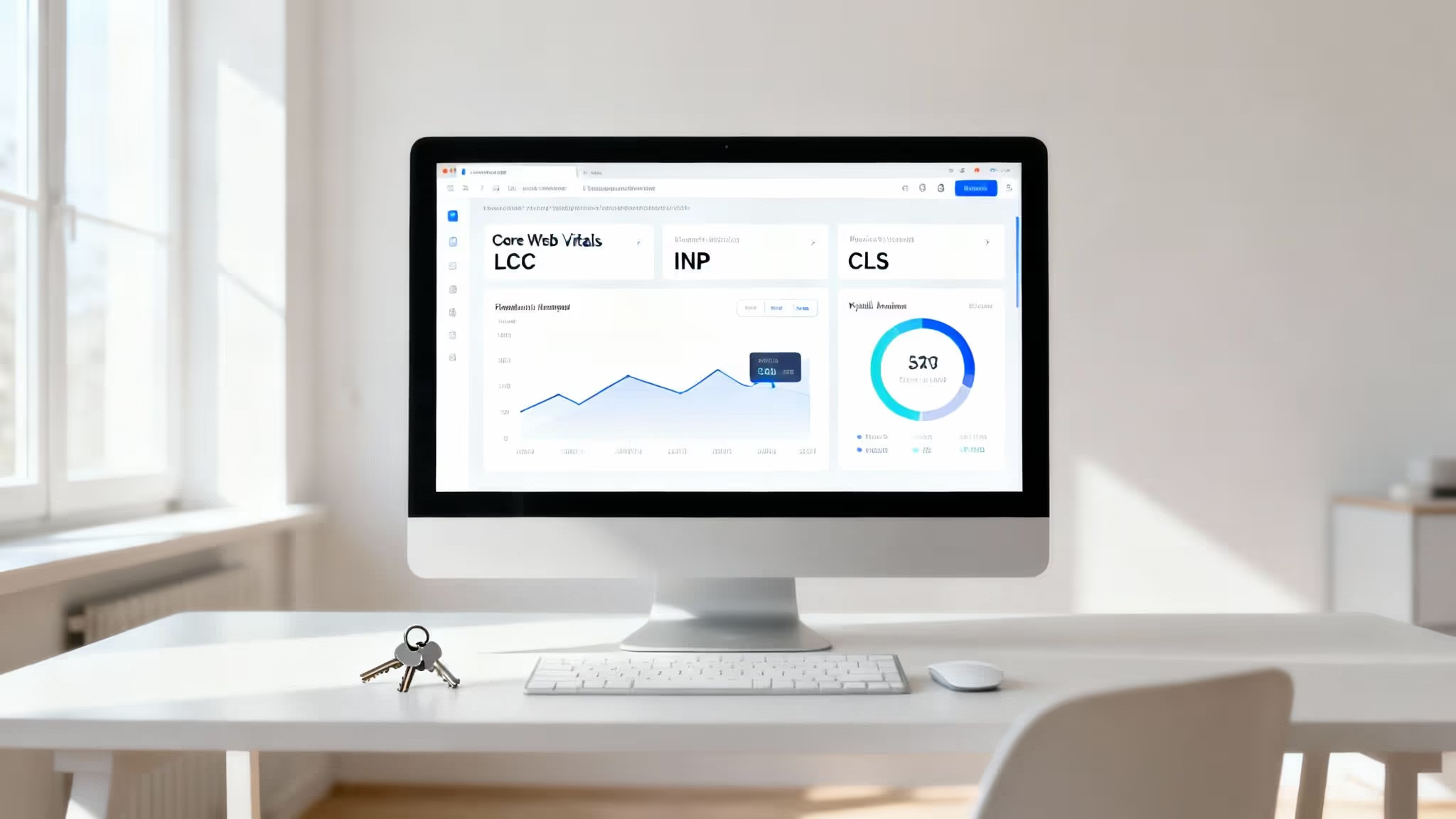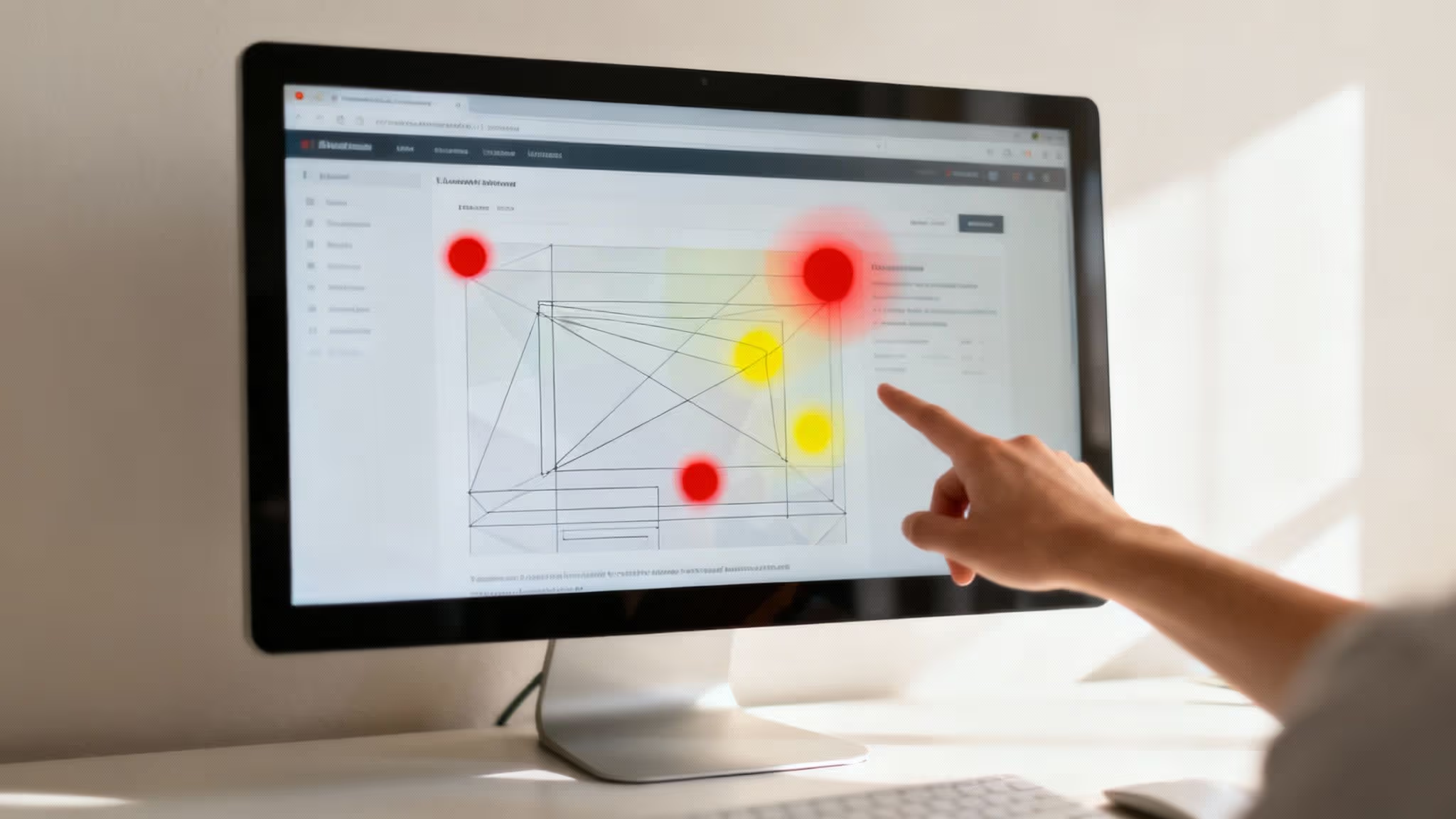Think of your website as a living organism. Website analysis is his regular health checkthat reveals where he is hurting, where his hidden potential lies, and what prevents him from growing up properly. It's not a one-time action that you tick off your to-do list. It's a strategic process that turns guesswork into facts and random successes into targeted growth.
Why web analytics is a strategic step to success, not just an extra expense
Successful companies have long understood that analyzing the web is not a useless expense, but one of the best investments in their own future. Nowadays, it's not enough to just “have” a website. You need to know exactly how it treads, what your visitors are doing on it and how to constantly move it on so as not to be left behind.
After all, a properly conducted analysis will give you answers to the most important questions that shape your business. It will help you understand why people abandon a full shopping cart, why the competition on Google is so much more visible, or which blog article actually brings you paying customers.
Analysis turns your static online business card into a dynamic tool that actively works for you. You stop just passively owning the site and start actively driving it to better results.
Understand the pitch you are playing on
Today, the Czech online world is the main battleground for customers. Digital literacy is high, and anyone who ignores data on user behavior is voluntarily ceding the market to their competition.
Just for an idea: in January 2025 there were approximately in the Czech Republic 10.1 million Internet users. This is incredible 94.2% of total population. This fact is clear — your website needs to be designed to be able to reach and serve almost the entire nation effectively. Browse other fascinating data on the digital Czech Republic in 2025 on DataReportal.
What regular analysis will really bring you
With data, you stop shooting from the sidelines and start making decisions that have a real impact. This approach will bring you several key benefits:
- More conversions and higher sales: You will detect and remove obstacles that prevent visitors from completing an order or submitting a request.
- Satisfied users (better UX): Find out what annoys your customers on the site and create an environment for them to come back to.
- Smarter investments in marketing: You'll see which marketing channels drive you the best customers, and you'll stop burning money where it doesn't make sense.
- Ahead of the competition: You will find the weaknesses of others and discover opportunities in the market that you can take advantage of first.
A thorough and regular analysis will give you both a map and a compass. You will know exactly where you are, where you are heading and how to get there in the fastest and most efficient way.
What are the key areas to focus on when analyzing the site?
Imagine that your site is a house. A comprehensive analysis, then, is not just a glimpse from the street. It's more of a thorough inspection, for which you invite five different specialists -- from a staticist who checks the foundations to an architect who assesses how the house is lived.
Each of them will focus on something different. And that's exactly how we approach Website analysis. We divide it into five key pillars, which are interrelated with each other. Neglecting one area will inevitably weaken all the others, and your website will never live up to its true potential.

We're not just collecting data. The goal is to turn the numbers and insights into a clear plan that moves you forward. Let's look at the individual “inspection” areas.
Overview of key areas of web analytics
This table summarizes the five main pillars of analysis, their main objective and the typical metrics that are followed within the field.
Area of AnalysisMain objectivesExamples of monitored metricsTechnical Health and SEOMake the site visible and understandable to search engines.Browsing speed, indexing status, 404 errors, sitemap.xml validity.Content and RelevanceProvide value, build trust and drive relevant visits.Click through rate (CTR), time on page, organic keywords, bounce rate.UX/UI and usabilityFacilitate visitors' journey to the destination and ensure a positive experience.Conversion rate, task completion rate, heatmap analysis, form error rate.Power and speedGuarantee flash loading and great impression on all devices.Core Web Vitals (LCP, FID, CLS), time to interactivity (TTI), page size.Web Analytics and ObjectivesMeasure what is important and make decisions based on real data.Traffic sources, user behavior, fulfillment of goals, conversion value.
As you can see, each area has its own specific task, but only their interplay creates a truly successful and functional website that fulfills business goals.
1 Technical Health and SEO Basics
These are the basics of your digital home. If they crack, it doesn't matter how beautiful your facade is. Technical analysis reveals whether your website is built on solid footing for both search engines and users.
Basically, we're finding out if Google and other search engines can easily find, crawl (crawl) and understand (index) your site's content. Errors in this area mean that you are practically invisible to your potential customers.
We focus on things like:
- Structure of URL addresses: Are they short, logical and speak the language of your customers?
- Sitemap (Sitemap.xml): It's like giving a search engine a house map so it doesn't miss anything.
- File Robots.txt: It gives clear instructions on where robots can and where they can't.
- Security (HTTPS): Today is an absolute standard without which you lose confidence.
2 Content strategy and relevance
Content is what you tell the world. It is a tool to answer your customers' questions, solve their problems and build your position as an expert. Content analysis will show us if your words really work.
It's not just about flawless grammar. It comes down to whether your content resonates with your target audience and whether it naturally leads people to the action you want from them.
Top content doesn't talk about you. It talks about your customer's world. Only then does a random visitor become a fan and a fan a satisfied client.
3 User Experience and Design (UX/UI)
This area is purely about feelings. How do people on your site feel? Do they easily find what they are looking for or wander frustratingly in a circle? Poor user experience (UX) is one of the most common reasons why visitors leave for competitors.
We don't just evaluate how the site looks (UI), but mainly how it is used. We track users' journeys, look for dead ends and find out why people leave the shopping cart just before the destination.
4 Performance and loading speed
In today's hurried times, seconds decide. According to studies, up to 40% of users will leave if the page doesn't load within three seconds. Speed is the first and often the last impression you make on a visitor.
A slow website not only discourages impatient people, but at the same time, search engines, led by Google, penalize it. Performance analysis therefore focuses on key metrics such as Core Web Vitals, and looks for anything that unnecessarily hampers your site.
5 Web Analytics and Goal Measurement
The last pillar is the brain of the whole operation. Without properly configured analytics, you work blindly. This area ensures that you collect the right data and most importantly — that you understand it.
Here we look at where people go to you from, how they behave on the site and which sites most often convince them to take action. Properly set goals in tools like Google Analytics 4 are absolutely key. Without them, you will never know for sure what really brings you results.
Detect technical errors and kick-start your website speed
Think of your website as a car. You may have a shiny body and a luxurious interior, but when the engine is coughing and stuttering, you won't get anywhere. The technical side of the site is exactly this engine. If it doesn't tread like clockwork, your entire online business stands still. And it's not just about SEO — it's about respecting your visitors' time.
Invisible technical errors are like roadblocks. Search engines can't get to your content because of them, so they can't even show you to the people who are looking for you. And the users themselves? They experience slow loading, frustration, and leave before they even know how great you are. Objective of the technical part Website analytics It is necessary to find these barriers and remove them once and for all.

Why speed is so damn important
In today's world, impatience is the norm. If the page doesn't load within three seconds, a large proportion of people mercilessly close it and go house on. Every extra second costs you money and potential customers.
But that's not all. At the same time, speed is one of the key signals that Google is guided by. For him, a slow website means a poor user experience and thus logically moves it lower in the search results. Speed optimization is therefore an investment with a double return: you get more satisfied users and at the same time climb the search engines.
Website speed is not just a technical detail, it's part of your brand. The fast site says, “We value your time.” The slow site screams, “Wait, you might be able to wait. “
Core Web Vitals Human Speech Metrics
Google introduced a set of metrics Core Web Vitalsso he can better gauge how people on the web actually feel. These are no complicated numbers, but basically answers to three questions that each of us subconsciously asks ourselves:
- LCP (Largest Contentful Paint): How quickly will I see the main thing? This metric measures how long it takes for the largest element -- typically a large image or headline -- to appear on the screen. The goal is to get under 2.5 seconds.
- INP (Interaction to Next Paint): How fast does the website react when I click on something? INP monitors the response when a button is clicked or a menu is expanded. Immediate reaction gives the user the feeling that everything is working as it should.
- CLS (Cumulative Layout Shift): Won't something fall under my arm? Surely you know that moment when you want to click on something, but the page jumps and you hit the ad. CLS measures exactly this annoying visual instability.
These metrics are becoming more and more important in the Czech pond. Companies that want to succeed can no longer afford to ignore the technical state of their website. Customers are more demanding and the competition does not sleep.
What we look at in the technical audit
In addition to speed, technical analysis focuses on dozens of other details that together make up a healthy and safe website that search engines understand. Even if you don't tailor-made website, it is absolutely key to have those basics in order.
Among the most important are:
- Indexing and browsing: We find out if Google and List reach you at all, and if they understand correctly which pages are important.
- Sitemap (sitemap.xml): We check that you have an up-to-date and functional map that serves search engines as such a tourist guide to your site.
- File robots.txt: We verify that this file gives the search engines the correct instructions and does not accidentally block them from accessing where they have them.
- Security (HTTPS): A valid SSL certificate is the absolute standard today. Not only for data security, but also for the trust of users.
- Structure of URL addresses: Are your addresses short, concise and easy to read? The clear structure helps both humans and robots to navigate the web better.
- Error pages (404): We are looking for broken links that lead to dead ends. It is necessary to correct these errors so that visitors do not get lost.
A technical audit is like a thorough health check for your website. It will reveal hidden problems that could grow into serious trouble over time and give you a clear plan for how to cure them. Thus, your site will stand on solid and fast foundations, ready to win.
Content analysis and keyword strategy
Think of your website as a marketer. Do they speak the language of their customers? Does he understand what really bothers them and what they need to hear? You can have a technically perfect and lightning-fast website, but if its content doesn't resonate with people, it's just an empty, silent inbox. It is the content that sparks the spark and turns a random passer-by into an enthusiastic customer.
And this is where the content part comes in. Website analytics. It's not just about checking spelling and counting words. It's a deep dive into your communication strategy that reveals whether your content really works — whether it attracts the right people, engages them, and ultimately convinces them.
Is your site more like a live library full of answers, or a dusty archive? Content analysis is an inventory that will show which “books” need to be dusted off, which to rewrite from the ground up, and which topics your readers crave are completely missing from the shelves.
Content audit: Let's tidy up what you already have
Before we start inventing anything new, we need to look at what is already on the web. Content auditing is such a general purge. Page by page, from blog articles to product descriptions, we go through and ask the most important:
- Power: Which sites are driving and bringing you traffic? And which, on the contrary, are dead weight?
- Relevance: Is the information still valid? Does the content answer today's questions of your customers?
- Quality: Does the content go in depth? Is it original, trustworthy and actually useful?
- Consistency: Do all the lyrics speak in one voice? Do they reflect the personality of your brand?
We often discover so-called “content ballast” — pages that are more damaging to the site. These can be duplicates, texts with zero added value or long-out-of-date articles. Getting rid of them is the first, liberating step to healing the entire content strategy.
Keywords: A window into the soul of your customers
A lot of people see keywords as just an annoying technical obligation for SEO. It's a mistake. A huge mistake. The keywords are a direct transmission from the head of your customers. They are words and phrases they type into Google when they have a problem, seek advice or want to buy something.
Therefore, keyword analysis is not about how to cram phrases into text. It's about listening and understanding.
A keyword is not just a word. It's a question, it's a need, it's a desire. And your task is to create the best possible answer to it, which exists on the Internet.
With the right analysis, we can find out how your customers think, what terms they use and what they expect from you. And this will allow us to create content that is completely natural and useful for them. And this is exactly the kind of content that search engines love. If you want to know how to increase site traffic using content, you just can't do without understanding keywords.
What is hidden behind the words? Disclosure of Search Intent
A user looking for the “best running shoes” probably wants reviews and comparisons. He is in deliberation mode. In contrast, the person who enters “running shoe repair” solves a completely different problem and needs service or instruction. The keyword may be similar, but the intent is diametrically different.
Understand Search Intent is absolutely essential. We need to create content tailored to what stage the customer is in.
- I want to know something (informational intent): The user is looking for answers. For example: “how to start running”.
- I want to go somewhere (navigation intent): The user is looking for a specific brand. For example: “oldfriend site”.
- I want to buy something (transactional intent): The user is ready to pull out the wallet. For example: “buy Nike Pegasus shoes”.
- I want to choose (commercial survey): The user compares and considers. For example: “Hoka vs. Asics review”.
When you cover each of these purposes in terms of content, you are accompanying the customer along their entire journey. Thus, you build your position as an expert, gain trust and, ultimately, sales. Content analysis will give you a map with which to stop shooting blindly and start systematically building a library of answers that your customers will be happy to return to.
Peering into the minds of your customers: UX and behavioral data
Even if you have a technically fine-tuned website and content that could win prizes, the real test comes only when your visitor enters the scene. What will he do? Where does that drag him? What excites him and what, on the contrary, sends him away in frustration? This is where the treasure lies — answers that will reveal how your business really works. It's where hard data meets psychology and user experience (UX).
Embark on web analytics in this area is like becoming a detective. Every click, every page shift, every cart abandonment is a trace. These aren't just numbers in spreadsheets. They are fragments of a story that tells about the wishes, confusions and decisions of your real customers. Our job is to decipher this story correctly.

Two Perspectives, One Goal: Combining Quantity and Quality
To get the full picture, you need to look in two ways at once. The first is a bird's eye view that quantitative data will give you. The latter is a close-up view, almost as if you're sitting behind the user's back -- and that gives you a qualitative analysis.
- Quantitative data (What's going on?) : Tools such as Google Analytics 4 They will show you what is happening on your site on a mass scale. Which sites have the highest rate of instant abandonment? Where does the buying process most often break down? These are hard, unquestionable facts.
- Qualitative data (Why is this happening?) : Tools such as heatmaps, visit recordings or user testing will reveal, why it's happening. Suddenly you see where people are actually clicking, how far they scroll or where they're cluelessly circling the mouse because they can't find the damn button.
It's only when you connect these two worlds that it starts to make sense. You will find, for example, that 80% of people are leaving shopping cart (quantitative fact), and recordings reveal to you that there is a confusing cluttered delivery address form (qualitative insight). Bingo!
What do we actually look for when we analyze behavior?
The goal is not to collect data just for pleasure. We look for specific anomalies and patterns that signal to us either a problem or, conversely, a hidden opportunity. We focus mainly on:
- Dead ends: Places where users are stuck and don't know which way to go next.
- Friction surfaces: Any obstacles that complicate their path to the goal. It can be complex navigation, unclear texts or a form that simply does not work on the mobile.
- Moments of hesitation: We are watching where people are making decisions and why they may be choosing to leave instead of completing a purchase.
Great UX is not about adding lots of cool animations to the site. It's about ruthlessly removing everything that stands between the user and their target. The smoother the road, the more satisfied the customer.
Tools to help you read minds
You don't need a crystal ball to peer into the heads of your visitors. All you need is the right tools:
- Heatmaps (heat maps): They visualize where people click the most, how deep they scroll, and where they move the mouse. This will perfectly reveal which elements attract attention and which, on the contrary, are completely ignored.
- Session recordings: Anonymized videos of real visitors. You're watching exactly what they saw — every click, every move, every error message. There is no better way to experience your website through their eyes.
- Analysis of conversion funnels (funnel analysis): Shows you the user's path to the destination (e.g. insertion into cart → checkout → payment). Here you will see exactly at which step you lose the most potential customers.
In addition, for the Czech market it is absolutely crucial to know where people come from. According to AMI Digital Index 2024 survey, social networks are used in the Czech Republic roughly 8.05 million people, which is 76.7% of population. Therefore, resources such as Facebook and Instagram play a huge role. The analysis must take into account how people coming from these platforms behave. Are they more active or, on the contrary, disappear faster? See more trends of social networks and their influence on marketing at ppcone.cz.
Understanding user behavior is a never-ending process of discovery. Each change to the site and each new campaign brings with it new reactions and new opportunities for improvement. Once you start really listening to the data, you stop guessing and start systematically creating a website that your customers will love.
How to turn a pile of data into a concrete plan that works
The data itself, as fascinating as it is, will not improve your website on its own. They're like a map to treasure, but without a key to tell you what all those signs and symbols mean. The True Magic web analytics It comes only in the last but absolutely crucial step: to transform all those graphs, figures and insights into a clear, understandable and, most importantly, actionable plan of action.
Now you become an analyst to a strategist. The engine that drives change for the better.
The goal is not to create a 100-page report that no one will read and get stuck in the dust in the drawer. The point is to distill the most important into a clear document that becomes a living guide for your entire team — from marketers to developers to executives. Everyone needs to know at a glance what to do, why it is important and what result we all expect from it.

How to set priorities and not get lost in the details
When an analysis reveals dozens of potential improvements to you, it's easy to panic. Where to start? What burns the most? Therefore, it is essential to be able to sort tasks according to importance. Not according to what is easiest, but according to what will actually bring the greatest results.
A simple but extremely effective matrix of impact and difficulty is great for this. You evaluate each task according to two axes:
- Potential impact: How much will this change move with key metrics such as conversions, sales or customer satisfaction?
- Difficulty of implementation: How much time, money and people will it take to bring this to life?
The most valuable things you're looking for are high-impact, low-intensity tasks. They are called “quick wins”. They will immediately bring visible results and kick the whole team with energy and motivation to embark on even more complex things.
This approach will help you focus on what really makes sense and not waste time on cosmetic treatments with minimal effect. For example, simplifying the payment process almost always has a higher priority than changing the color of the footer, although this can be a bit more challenging technically.
Create a clear roadmap for change
The result of prioritization is roadmap — a clear schedule of specific steps. This is no longer just an ordinary to-do list. It's a strategy document that clearly says what, when and who will do.
The correct roadmap always contains:
- Specific tasks: Not a general “improve UX”, but a clear “simplify the form on page X by removing Y and Z fields”.
- Responsibilities: Who is in charge of the task.
- Dates: By when it's supposed to be done.
- Success metrics: How do we know it worked? (E.g. “increase the rate of completion of the form by 15%“).
This is exactly how web analytics becomes the engine of your continuous growth. The circle is closing — you make a change, measure its impact, and plan your next steps based on new data. This cycle is the basis of successful optimization, whether it is the main page or that, What is a Landing Page and how to tweak it for a specific campaign.
A few questions you often ask
When a person begins to delve into the world of data and optimization, it is perfectly normal for a lot of questions to arise in his head. Let's go through the most common ones to be clear about how to go in the right direction on your way to a better website.
How often should we analyze the web?
There is no single right answer to this. It depends on how dynamic your business is. But the key is to distinguish between two types of “maintenance” that should go hand in hand.
- Regular monitoring (monthly): Think of it as a quick check on the pulse of your site. Check in once a month Google Analytics and Console de buscato check the basic metrics: traffic, where people come from, how they meet goals, what keywords they found you through, and if there were any technical errors. This is a great habit that will help you detect unexpected falls in time or, conversely, discover a new, interesting opportunity.
- In-depth audit (once a year): This is kind of a generalist of your site. At least once a year, or every major change (for example, during a redesign or launch of a new product line), it's time for a proper, comprehensive web analysis across all areas. It is such an audit that will uncover deeper, strategic problems and determine the direction for months to come.
Which tools are enough to get started and are they free?
The good news is that you don't have to spend tens of thousands on expensive software right away. For a really solid foundation, the holy trinity from Google will suffice for you handsomely. They are free, loaded with data, and honestly, you just can't do without them.
- Google Analytics 4: Your main radar that tells you everything about who your visitors are and what they do on the site. You'll find out where they're coming from and if they're getting where you need them to go.
- Google Search Console: Here you chat directly with Google. It will tell you what words you appear on, how you perform in search results, and whether your website is plagued by technical difficulties seen by the search engine.
- PageSpeed Insights: A simple but powerful helper for speed control. It will show how fast your website loads on both mobile and computer and, most importantly, tells you what is holding it back.
How much does such a professional web analysis cost?
The price can vary a lot because it depends on several things. It is most influenced by the size and complexity of your site, how deep to dive, and how detailed the recommendations should be.
Professional analysis is not just a list of mistakes. It's an investment in an understandable plan to turn your site into a money machine that works for you.
The variance in the market is really big. A basic technical and SEO audit of a smaller site can start around 10,000 CZK. A comprehensive strategic analysis of a large e-shop, including UX, content and a detailed view of the competition, can easily swing even though 50 000 CZK. Therefore, always make it clear in advance what you expect from the analysis — whether it is a list of problems or a complete action plan with priorities.
Do you feel like your website has more to offer, but don't know where to start? Oldfriend helps you uncover its hidden potential and turn data into real growth. Let's talk tentatively about how to move your business forward at oldfriend.cz.



